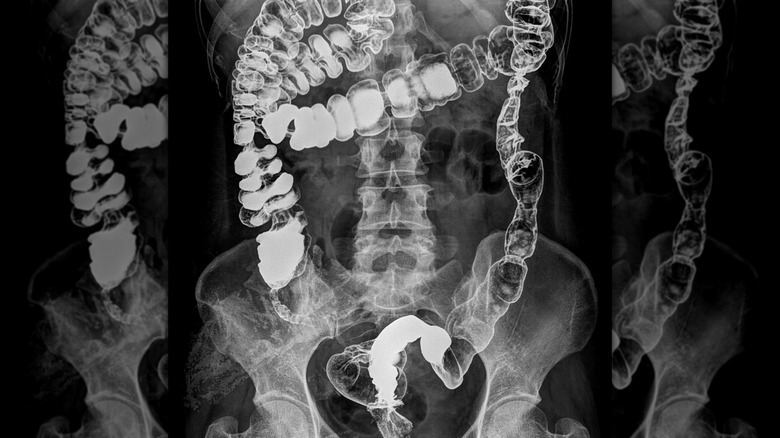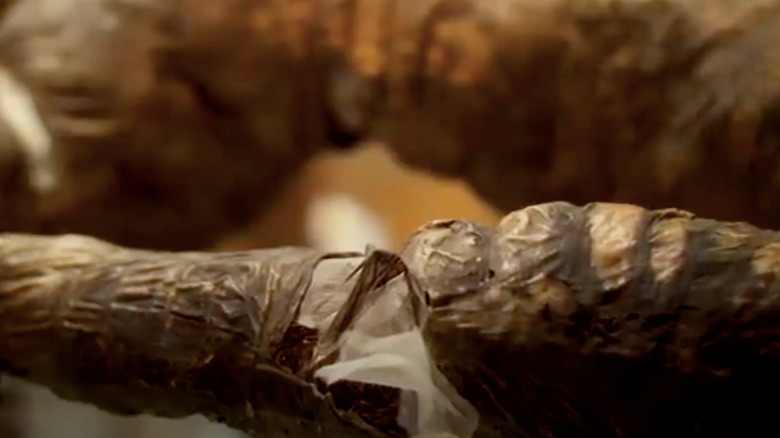How 'Balloon Man' Earned His Unusual Nickname
One man's chronic medical issue caused him to become an exhibition at an 1800s museum — and one of his organs is preserved in a different museum to this day. Known only as J.W., this young man had an uncomfortable problem that doctors didn't yet know how to fix, according to the Mütter Museum.
J.W. had Hirschsprung's disease, also called congenital aganglionic megacolon. As Medscape explains, Hirschsprung's disease occurs when there are no ganglia in the distal colon. Ganglia are a type of nerve cells, and without them, the colon is unable to move waste through the intestines and to the rectum (via the Mütter Museum).
MDLinx reports that J.W. began having medical problems nearly from birth. By age two, he began to get constipated often. His stomach swelled up, and he had irregular bowel movements. His abdomen became permanently bloated. By the time he reached teenagehood, J.W. could go a month between bowel movements.
Lifelong constipation
Fecal matter was accumulating in his bowels, but J.W. had no way to relieve his chronic constipation (via the Mütter Museum). When he visited doctors, they told him that he didn't have a tumor. But, surgeries in the 1800s were still considered too risky for the young patient.
J.W. joined a dime museum in his early '20s. The museum called him the "Balloon Man" and "Wind Bag," and let people view J.W.'s distended abdomen. Unfortunately for J.W., being unable to move his bowels caused quite the buildup in his guts, according to MDLinx. His colon was filled with many extra pounds of excrement that had accumulated.
If J.W. had been born today, he probably would have had a much easier life. His condition was considered untreatable at the time, per the Mütter Museum. About 1 in every 5,000 to 8,000 babies born will have Hirschsprung's disease, but today, doctors know the signs to look for. The disease can be present from birth, and if a baby shows signs of a distended stomach or chronic constipation from birth, doctors can begin a treatment plan, according to the Mayo Clinic.
J.W.'s preserved colon
The disease can cause children to fail to thrive or to develop enterocolitis — an intestinal infection — which can be life-threatening, as the Mayo Clinic explains. If Hirschsprung's disease is more mild, it may not be diagnosed until the patient is a child or even an adult. According to MDLinx, Hirschsprung's disease was first named in 1886, during J.W.'s lifetime.
Unfortunately, without treatment, J.W. only lived to be 29 years old. He was discovered dead in 1892 and his final moments were spent in the bathroom as he tried to have a bowel movement.
The reason we know J.W. had 40 pounds of waste in his colon is that the organ was actually preserved after he died — and you can visit it today at the Mütter Museum of the College of Physicians of Philadelphia, located in Pennsylvania. The Mütter Museum hosts all kinds of other record-breaking bodily oddities, like a 74-pound ovarian cyst and a prostate weighing one pound. J.W.'s eight-foot-long colon was emptied, dried, and refilled with fabric and straw to preserve what it would have looked like in the 1890s.


